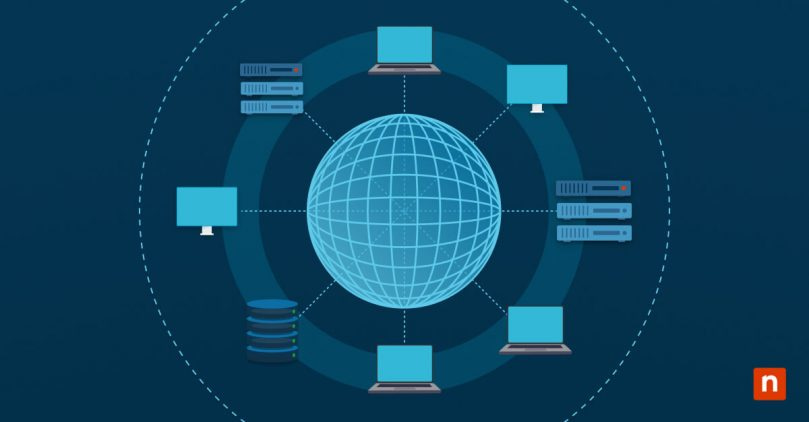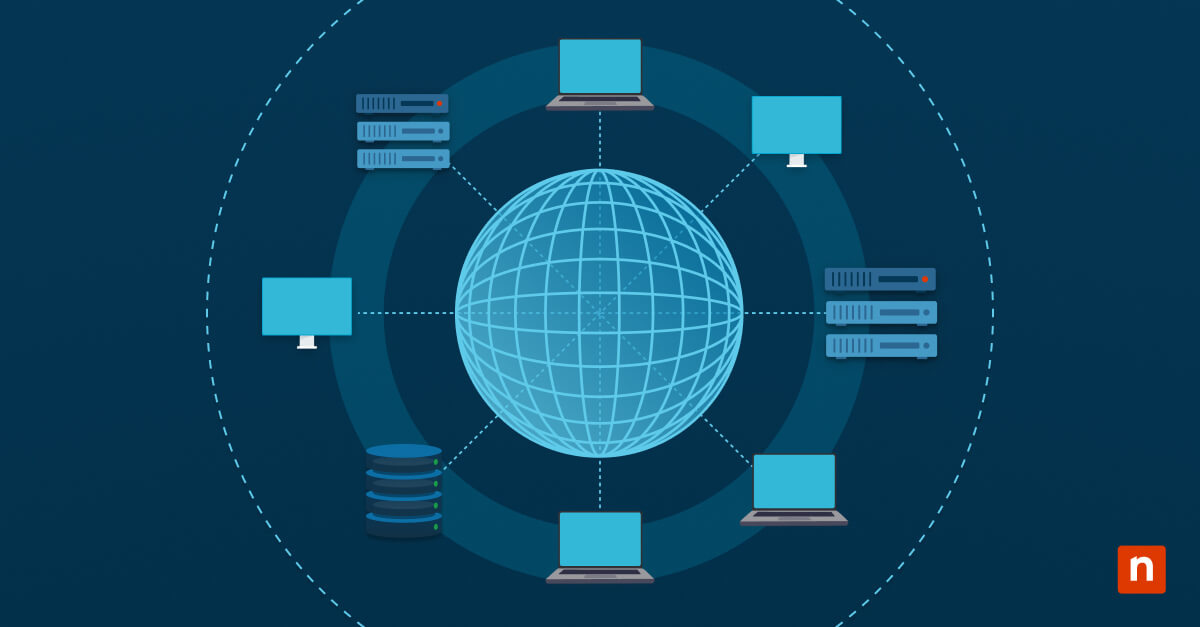Computer networking allows you to connect devices to share files and resources throughout your workplace. With a computer network, your office can better use your budget by sharing an internet connection, printers, copiers, and software between multiple users or even among offices in different locations.
Networking your computers involves connecting devices using cables or wireless media and using different types of network protocols to allow connected devices to communicate with each other.
What is a protocol in networking?
A protocol in computer networking is a set of rules and procedures that govern communication between devices on a network, specifying how to send, receive, and format data. A network protocol serves as a common language, ensuring that data is transmitted efficiently and accurately from one point to another, regardless of the hardware, software, or internal processes involved. Protocol support can be coded into software, built into hardware, or both.
Network protocols are required for devices to understand and interpret the information they receive. Protocols make networks within the workplace possible, as well as the modern internet.
What are the 3 main types of network protocols?
Network protocols can be broadly classified into three main types:
- Communication
- Network management
- Network security
Each type of protocol serves a specific purpose and plays a crucial role in maintaining the integrity and functionality of a network.
12 common types of network protocols
Beyond these three broad categories of protocols, many other network protocols handle tasks such as authentication, automation, compression, file transfer, routing, and others. Let’s look at the 12 most common types of protocols you’re likely to encounter.
Communications protocols
Communication protocols are responsible for enabling communication between devices on a network. They define how data is formatted, transmitted, received, and interpreted. They also determine the network’s efficiency and handle authentication and error detection. Some of the most commonly used communication protocols include:
- Transmission control protocol (TCP) or internet protocol (IP)
TCP/IP is the foundation of the internet and most home and business networks. TCP and IP work together to ensure reliable and secure network data transmission. TCP handles the sequencing, error checking, and data flow control, while IP handles the addressing and routing. This suite of protocols helps maintain network reliability by automatically recovering from any device failure on the network and requiring little central management from network administrators.
- Hypertext transfer protocol (HTTP)
The protocol HTTP transmits hypertext, which is the foundation of the World Wide Web. It enables communication between web servers and web browsers, allowing users to access and interact with websites.
- User datagram protocol (UDP)
UDP is a connectionless protocol commonly used for real-time applications such as video streaming and online gaming. Unlike TCP, UDP does not guarantee data delivery or provide error checking, making it faster but less reliable.
- Internet relay chat (IRC)
IRC is a protocol for real-time communication through text messaging. It allows multiple users to participate in group or private chats in online communities and chat rooms.
Network management protocols
Network management protocols help specify the policies and processes used to monitor, control, and manage network devices and resources, ensuring steady communication and optimal performance. They enable administrators to diagnose and troubleshoot issues, configure network devices, and collect performance data. Some of the common network management protocols include:
- Internet control message protocol (ICMP)
ICMP is a protocol for network diagnostics and troubleshooting. It is primarily used to send error messages and control messages, such as ping requests and responses, to check the availability and responsiveness of network devices.
- Simple network management protocol (SNMP)
SNMP assists in managing and monitoring network devices. It allows administrators to gather performance data, configure settings, receive notifications, and troubleshoot the performance and health of devices.
Network security protocols
The main function of network security protocols is to keep data safe and secure and ensure availability as it travels over network connections. They also authenticate users and devices and establish secure connections. The type of protocol used depends on the data and the type of connection. Commonly used network security protocols include:
- Secure file transfer protocol (SFTP)
The SFTP protocol provides secure file transfer capabilities over a network using encryption to protect data during transmission. SFTP ensures that only authorized users can access and transfer files.
- Secure sockets layer (SSL)
SSL is a protocol that provides secure communication over the Internet. It encrypts data transmitted between web servers and web browsers and prevents unauthorized access and eavesdropping.
- HTTP secure (HTTPS)
A secure version of HTTP, HTTPS uses SSL/TLS encryption to protect the confidentiality and integrity of data transmitted between a web server and a web browser. This protocol is commonly used for secure online transactions, such as online banking and e-commerce.
Other types of network protocols
Apart from the main types mentioned above, several other network protocols serve specific purposes, including:
- Post office protocol (POP)
POP is used for retrieving email from a mail server and allows users to download emails from the server to their local devices.
- Internet message access protocol (IMAP)
IMAP is another protocol to access and manage email messages stored on a mail server. Unlike POP, IMAP allows users to view and manipulate emails on the server without downloading them.
- Dynamic host configuration protocol (DHCP)
DHCP automatically assigns IP addresses and network configuration settings to devices on a network. It eliminates the need for manual IP address assignment, thereby simplifying the process of network configuration.
Choosing the right network protocol for the right application
With a wide variety of network protocols available, choosing the right one for a specific application is crucial. Consider factors like data transmission requirements, security needs, network infrastructure, and remote connections. It is essential to understand the capabilities and limitations of different types of protocols to make an informed decision.
Learn more about network protocols
This guide offers an overview of some of the most common types of network protocols. Additional protocols that serve various networking purposes are available. You should choose the protocols that best secure your network while providing the access your employees need.
Learn more about the remote access protocol, point-to-point tunneling protocol (PPTP), remote desktop protocol, and more by visiting the NinjaOne blog.








